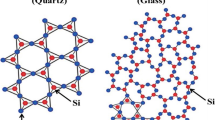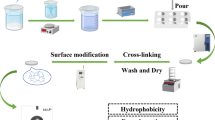Summary
A new cell membrane stationary phase (CMSP) consisting of porous silica coated with active cell membranes is presented for affinity chromatography. By immersing, silica into a suspension of cell membranes, the whole surface of silica was covered by the cell membranes due to the irreversible adsorption of silanol groups (Si−OH) on the silica surface and the self-fusion of the cell membranes. CMSP can be used directly as a chromatographic packing material without any additional chemical modification. The surface characteristics, enzymatic activity, and chromatographic behavior of CMSP were investigated. The results obtained from scanning electron microscope, surface energy spectrometer, enzyme assay, and liquid chromatography showed that the surface characteristics of CMSP were very different from that of normal and reversed stationary phases. CMSP was found to have the characteristics of both cell membrane activity and chromatographic separation. Moreover, CMSP, as a chiral stationary phase, could be used for the enantiomeric separation of (±) Bay-K8644. The capacity factor of some calcium antagonists on CMSP was found to have a good correlation with their pharmacological actions. It is concluded that CMSP may be used not only as a kind of packing material in bio-affinity chromatography, but also as a tool for studying the interactions between a drug and its receptor.
Similar content being viewed by others
References
Snyder, R.Principles of Adsorption Chromatography, Dokker, New York,1968.
Majors, R.E.; Hopper M.J.J. Chromatogr. Sci. 1974,12, 767.
Roumeliotis, P.; Unger, K.K.J. Chromatogr. 1978,149, 211.
Melander, W.R.; Horvath, C. InHigh-Performance Liquid Chromatography Reversed-phase Chromatography, Advances and Perspectives C. Horvath, ed., Vol. 2, Academic press, New York,1980, p. 114.
Wahlund, K.G., Lund values, U.J. Chromatogr. 1976,121, 269.
Kraak, J.C.; Crombeen, J.P. InPractice of High Performance Liquid Chromatography: Liquid-liquid Chromatography, H. Engelhardt, ed., Springer-Verlag, Berlin, Heidelberg,1986.
Shuyun Xu; Rulian Bian; Xiu Chen, InMethod of Pharmacological Experiment (Second Edition), the People's Medical Publishing House, Beijing,1994.
Lowry, O.H.; Rosebrough, N.J.; Farr, A.L.; Randall, R.J.J. Biol. Chem. 1951,193, 265.
Langchong He; Xindu Geng,Acta Pharmaceutica Sinica 1998,33, 42.
Rang, H.P.; Dale, M.M.; Ritter, J.M. inPharmacology (Third Edition): the Heart, London, Churchill Livingstone,1996.
Author information
Authors and Affiliations
Rights and permissions
About this article
Cite this article
He, L., Wang, S. & Geng, X. Coating and fusing cell membranes onto a silica surface and their chromatographic characteristics. Chromatographia 54, 71–76 (2001). https://doi.org/10.1007/BF02491836
Received:
Revised:
Accepted:
Issue Date:
DOI: https://doi.org/10.1007/BF02491836




